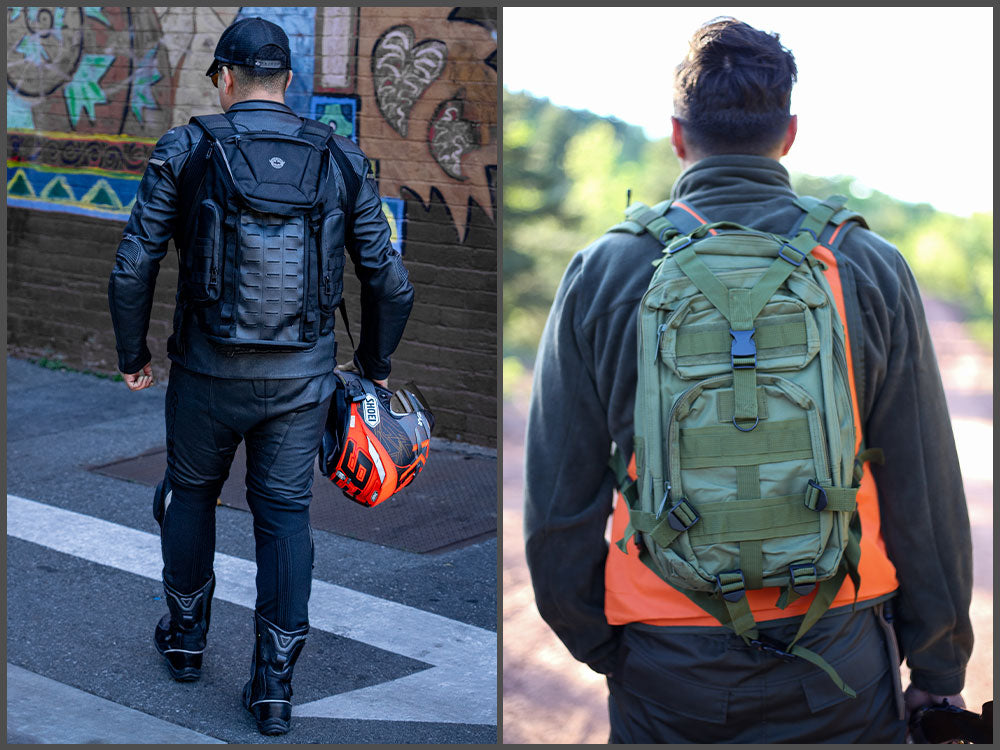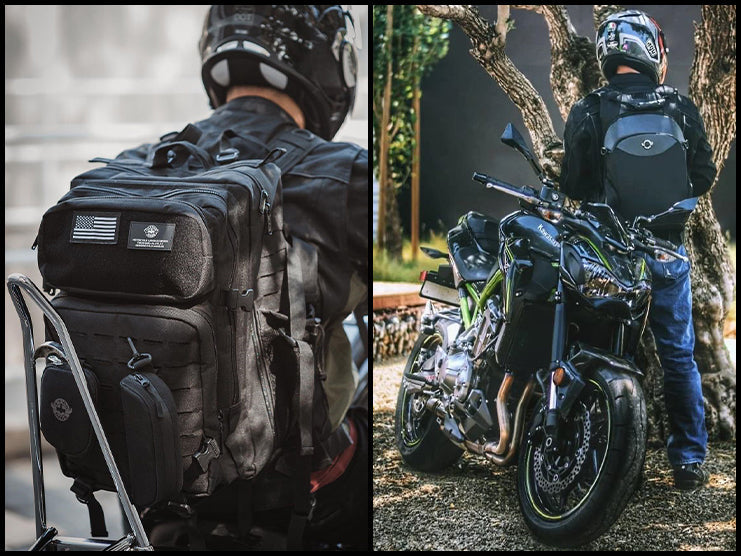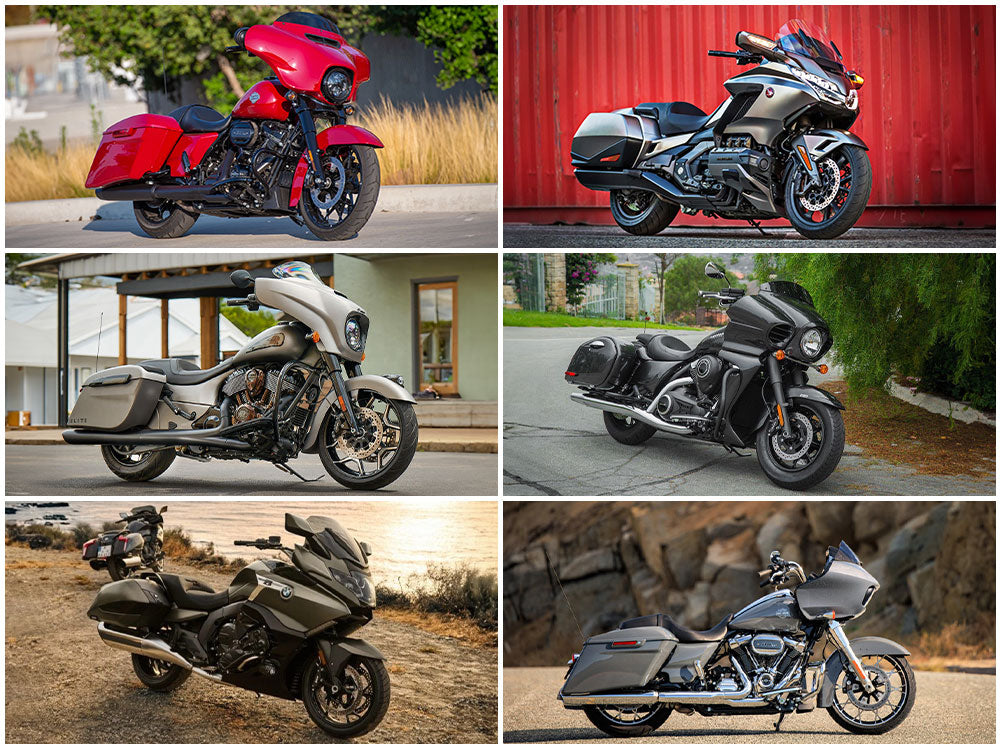Table of Content
1. A Brief Background of Backpacks
A backpack is a bag with straps that people can carry over their shoulders. Contrary to popular belief, a backpack is not a modern accessory. The use of backpacks dates back to 3300 BC, a discovery made by a few German hikers when they stumbled upon a naturally mummified human in September 1991. However, the first modern backpack was designed by Dick Kelty in 1952. As a result of his useful invention, Kelty was named Henry Ford of Backpacking. Being an outdoor person, Kelty used to carry out his adventurous excursions using uncomfortable bags and carriers. Being an aircraft engineer, he decided to use his technical knowledge to design a backpack. To stitch the bag, his wife Nena Kelty used the remains of a military parachute and woolen carpets to craft the body and shoulder straps of the backpack. The couple eventually started selling the backpacks popularizing the concept of modern backpacks you use today.
With the introduction of modern backpacks, transporting belongings became easier for people from all walks of life. Students, corporate professionals, campers, and hikers use backpacks to carry their belongings safely. Soon motorcyclists also began using backpacks.
2. The Use of Backpacks in Motorcycling
Initially, motorcyclists used regular backpacks to carry their luggage on a two-wheeler. But as the motorcycle industry evolved, so did other sub-industries, including the motorcycle luggage industry. The concepts of motorcycle-camping and adventure riding also emerged in the late 20th century and helped boost the demand and sales of backpacks. These new riding trends gave rise to motorcycle-specific backpacks commonly referred to as motorcycle backpacks.
Also Read: Historical Background Of Motorcycle Luggage
3. Regular Backpacks vs Motorcycle Backpacks
Though the regular and motorcycle backpacks essentially serve a similar purpose, i-e to transport luggage, they are quite different in terms of material, features, frequency and extent of use, price, availability, storage space, and safety. Here are the key differences between regular and motorcycle-specific backpacks that a rider must consider before buying one.
3.1 Material & Construction
Regular motorcycle backpacks are crafted from regular nylon, polyester, or other synthetic materials that are not specifically known for their rugged use and tear resistance. Regular backpacks usually lack waterproofing coatings as well. The zippers and buckles may not be of high quality. Also, regular backpacks often lack reinforced stitching and foam padding.
On the other hand, motorcycle backpacks are crafted from commercial-grade 1000D Cordura. Ballistic nylon may also be used for body construction. Both of these materials are tested for their tear strength and resistance to harsh conditions. The straps of the motorcycle backpacks may come with thick foam padding for comfort. For weather resistance, motorcycle backpacks feature PU coating or are sprayed with other waterproofing chemicals. Reflective panels are added to these bags to increase visibility and safety on the road. Furthermore, they are equipped with sturdy zipper buckles to match the reinforced stitching and tough textiles.
3.2 Features & Accessories
Motorcycle backpacks come with different features and accessories that are added to enhance their versatility. Since most riders use their backpacks for camping and touring, these bags come with features to improve the recreational experiences of riders.
As mentioned, motorcycle backpacks feature PU coating or weather-resistant coatings that protect the bag and your belongings in case you encounter unexpected rain during your trips. Moreover, the bags are designed to carry a helmet along with other essentials so riders can easily prioritize their safety. Hydration packs and weather-resistant laptop sleeves are also two of the prominent features of modern motorcycle backpacks. Whether you are traveling cross country or just riding to your work, these features allow you to stay hydrated and at the top of your professional responsibilities. During motorcycle camping excursions, riders have to park their bikes in designated parking areas and explore the scenic camping sites on foot. Having a backpack allows riders to stay at places away from their camping sites within the national park, national forest, or other campgrounds. Therefore, backpacks come with padded straps, ventilation systems, top handles, and chest straps to ensure comfort and ease.
Lockable compartments, inner hidden pockets, sturdy zippers, and heavy-duty buckles ensure that your valuables are safe.
Regular backpacks are less versatile and are not specialized for motorcycling. However, they may still have some useful features, including sturdy zippers and buckles, pockets and compartments for organization, outer pockets for quick access, laptop sleeves, and padded straps.
3.3 Styling
Regular backpacks are available in a wide range of colors, styles, and sizes. Since motorcycle backpacks are designed with a motorcycle in mind, they are usually available in black, gray, and brown to complement the original styling and OEM finish of a bike. Two-tone motorcycle backpacks may also be available on the market; however, they are rare.
3.4 Weight
It is also worth mentioning that sturdy construction and tougher materials of motorcycle backpacks sometimes have their downside as they tend to be heavier than a regular backpack. Therefore, you may experience backpack palsy due to a heavy motorcycle backpack. The lightweight construction of a regular backpack makes it a great choice for hikers who have to carry more luggage.
3.5 Frequency & Extent of Use
The frequency and extent of use of a backpack depends on a number of factors, including the nature of use, material construction of the backpack, and a rider’s backpack maintenance schedule or cleaning habits. Most backpacks, whether regular or motorcycle-specific, are made to last. Motorcycle backpacks with their abrasion-resistance, built-in impact resistance, durable materials, and reinforced stitching tend to last longer. However, maintenance is crucial even if your motorcycle backpack is expensive, tough, and tested for rugged use.
Similarly, if you use a normal backpack with adequate care and caution, it will last you a while. However, bear in mind that regular backpacks are not designed to handle rugged conditions and harsh weather. So, if you are someone who enjoys dispersed motorcycle camping and off-road adventure rides frequently, then it is best to choose a motorcycle backpack.
3.6 Storage Space
In terms of storage space, motorcycle backpacks, and regular backpacks are equally reliable because the storage space is determined by their sizes. However, additional pockets tend to increase the storage space considerably by improving cargo management. Therefore, it is advisable to look for backpacks with inner and outer pockets so you can easily store all the things you might need on a long trip or on a regular ride.
3.7 Weight Distribution
Motorcycle backpacks are manufactured with the rider’s comfort in mind. Therefore, they are designed in such a way that all the weight gets distributed evenly. Due to the inherent design of a motorcycle backpack, riders can pack the heavier items closer to their back. This reduces stress and pressure on the upper body, especially neck and shoulder, and also prevents fatigue from settling in quickly. This weight distribution also helps maintain balance and control when riding your bike on uneven terrain.
Regular backpacks are not designed to store and carry belongings and they may not emphasize weight distribution. However, you can learn from more experienced riders in your social circle or watch tutorials on YouTube to find out how to pack your luggage with even weight distribution in a normal backpack. You can also download videos to watch them off-line when packing your luggage on your way back from the trip.
3.8 Aerodynamic Efficiency
When a vehicle runs at a high speed, more air drag applies to it, slowing it down. The same principle applies to motorcycles which is why specialized backpacks feature an aerodynamic design. Motorcycle backpacks help reduce drag by improving airflow. Consequently, they help improve the aerodynamic efficiency, acceleration, and mileage of a motorcycle, making your trips more enjoyable.
However, air drag is only a problem on open roads where your average speed can easily reach over 65 mph. In the cities, the average speed is usually around 35-40 mph. As a result, air drag does not slow down the motorcycle nor does streamlined parts or luggage improve mileage or acceleration. If your motorcycle use is restricted to towns and cities, then a regular backpack is all you need.
3.9 Safety & Practicality
Motorcycle backpacks come with attachment points so riders can secure them to the motorcycle parts. Due to these attachment points, loose straps cause less distraction for the rider who can focus on the road instead of worrying about the backpack falling or straps getting caught in the chain or rear wheel.
On highways, visibility is extremely important to ensure safety. The reflective panels on the motorcycle backpacks make riders more visible to others. Therefore, motorcycle-specific luggage indirectly helps decrease risk of accidents. Foam padding is also added in these bags to make them impact-resistant in the event of an accident. Also, motorcycles may fall over in the parking lot, on uneven roads, or due to failing stands, etc. If your backpack is attached to the bike, its foam padding will keep your valuables, such as laptop and camera lenses, safe in the event of a fall.
Other features that make motorcycle backpacks safer and more practical include key-lockable mechanism, inner hidden pockets, and water-proof coating. Except for the water-proofing, regular backpacks also have these safety features.
3.10 Price
Compared to normal backpacks, backpacks specialized for motorcycling are costlier as they are designed to have in-built qualities that help them tackle harsh weather and even harsher terrain. When out on the road, no matter how much you try to use your backpack carefully, it will be subjected to rough use. Moreover, exposure to rain, dust, and UV rays are also some of the damaging elements that a motorcycle backpack is capable of resisting. In comparison, regular backpacks are not designed bearing motorcycle use in mind. So they lack stream-lined aerodynamic shape. Materials used to make the normal backpack may be durable, but there is no guarantee that they can resist harmful elements, impact, and abrasion. Therefore, the higher price point of a motorcycle backpack is justified. On average, a large regular backpack may cost you between $50-$100. A small motorcycle backpack may cost you around $120, while a large motorcycle backpack can cost you up to $250. The costs vary based on brand, size, styling, number of features, and material construction, and additional accessories provided with the luggage.
3.11 Maintenance
To maintain the look of your backpack and use them for a long time, regular maintenance of the bag is as necessary as the motorcycle itself. Consider your backpack a part of the motorcycle and wipe it clean after the ride, store it away from moisture and direct sunlight, and renew the waterproof coating as needed.
It is worth-mentioning that maintenance of both backpacks is simple yet varies due to their materials. Made from synthetic textiles, such as canvas, nylon, or polyester, normal backpacks are machine-washable. Just make sure you avoid bleach and harsh chemicals and only use mild detergent. On the other, manufacturers advise against machine-washing your motorcycle backpacks due to their polyurethane coating, reflective panels, and sturdy materials. Machine-washing can spoil the finish of the bag and also reduce its water-proofing properties. Simply use soapy water and a soft sponge or cloth to clean the bag. If there is any dust or grime accumulation, you can use a soft brush to remove it. Hang the wet bag in shade to let it dry.
In addition, the maintenance frequency of motorcycle backpacks is considerably more than a regular backpack. Dirt or dust accumulation can result in an uneven finish and a decrease in the protective properties of PU coating. Therefore, it is necessary to wipe a motorcycle luggage bag with a damp cloth or a mild cleaning solution preferably after every ride. Riders may also have to reapply the waterproof coating on the bags after some time as per instructions provided with the product. Motocampers and adventure riders expose backpacks to rugged conditions. Therefore, it is necessary to inspect the straps, zippers, and buckles of the bag for wear and tear and get them fixed or replaced as needed.
3.12 UV Resistance
Over-exposure to sunlight and damp conditions can damage motorcycle backpacks and regular backpacks if they are crafted from nylon or canvas and lack PU coating. On the other hand, regular backpacks that are made from polyester can resist UV rays to a greater degree.
4. Last Words
Backpacks are a popular way of carrying essentials or extra luggage when riding a motorcycle. Due to the growing preference of riders for backpacks, different companies are designing backpacks that help improve the touring and camping experiences of motorcyclists. However, it is not necessary for all riders to buy an expensive motorcycle-specific backpack. If you are someone who uses bikes only for commutes, then a regular backpack is all you need to transport your belongings with ease. Therefore, it is advisable to consider your lifestyle and riding needs to determine the right backpack type for you.













Leave a comment
All comments are moderated before being published.
This site is protected by hCaptcha and the hCaptcha Privacy Policy and Terms of Service apply.